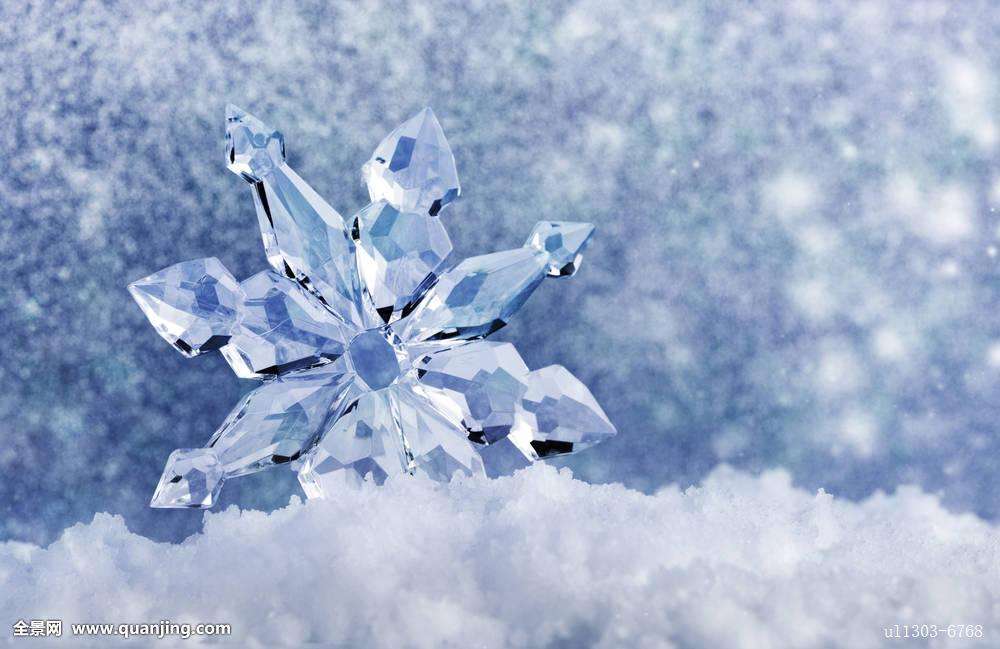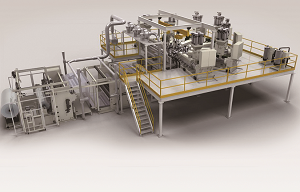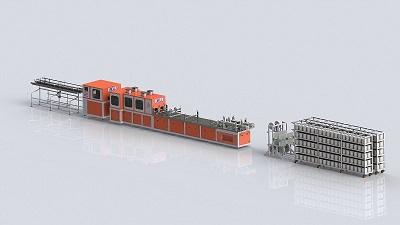On the difference between crystalline and amorphous plastics
Views:
Date:2016-12-30


一、什么是结晶性塑料?
结晶性塑料有明显的熔点,固体时分子呈规则排列。规则排列区域称为晶区,无序排列区域称为非晶区,晶区所占的百分比称为结晶度,通常结晶度在80%以上的聚合物称为结晶性塑料。常见的结晶性塑料有:聚乙烯PE、聚丙烯PP、聚甲醛POM、聚酰胺PA6、聚酰胺PA66、PET、PBT等。
1、 What is crystalline plastic?
Crystalline plastics have an obvious melting point, and the molecules are arranged regularly when they are solid. The regular arrangement area is called crystal area, and the disorderly arrangement area is called amorphous area. The percentage of crystal area is called crystallinity. Generally, polymers with crystallinity above 80% are called crystalline plastics. Common crystalline plastics include polyethylene PE, polypropylene PP, polyoxymethylene POM, polyamide PA6, polyamide PA66, pet, PBT, etc
二、结晶对塑料性能的影响
1)力学性能:结晶使塑料变脆(耐冲击强度下降),韧性较强,延展性较差。
2)光学性能:结晶使塑料不透明,由于晶区与非晶区的界面会发生光散射。减小球晶尺寸到一定程式度,不仅提高了塑料的强度(减小了晶间缺陷)而且提高了透明度,(当球晶尺寸小于光波长时不会产生散射)。
3)热性能:结晶性塑料在温度升高时不出现高弹态,温度升高至熔融温度TM时,呈现粘流态。因此结晶性塑料的使用温度从Tg (玻璃化温度)进步到TM(熔融温度)。
4)耐溶剂性,渗透性等得到进步,因为结晶分排列更加紧密。
2、 Effect of crystallization on properties of plastics
1) Mechanical properties: crystallization makes the plastic brittle (impact strength decreases), with strong toughness and poor ductility.
2) Optical properties: crystallization makes the plastic opaque, and light scattering will occur at the interface between crystalline region and amorphous region. Reducing the spherulite size to a certain degree not only improves the strength of the plastic (reduces intergranular defects) but also improves the transparency (when the spherulite size is less than the light wavelength, there will be no scattering).
3) Thermal properties: crystalline plastics do not appear high elastic state when the temperature rises, and show viscous flow state when the temperature rises to the melting temperature Tm. Therefore, the service temperature of crystalline plastics increases from TG (glass transition temperature) to TM (melting temperature).
4) Solvent resistance and permeability have been improved because the crystalline components are arranged more closely
三、影响结晶的因素有哪些?
1)高分子链结构,对称性好、无支链或支链很少或侧基体积小的、大分子间作用力大的高分子轻易相互靠紧,轻易发生结晶。
2)温度,高分子从无序的卷团移动到正在生长的晶体的表面,模温较高时提高了高分子的活动性从而加快了结晶。
3)压力,在冷却过程中假如有外力作用,也能促进聚合物的结晶,故生产中可调高射出压力和保压压力来控制结晶性塑料的结晶度。
4)形核剂,由于低温有利于快速形核,但却减慢了晶粒的成长,因此为了消除这一矛盾,在成型材料中加进形核剂,这样使得塑料能在高模温下快速结晶。常见的形核剂有滑石粉等。
3、 What are the factors affecting crystallization?
1) Polymer chain structure, good symmetry, no branched chain or few branched chains, small side group volume and large intermolecular force are easy to lean against each other and crystallize easily.
2) Temperature, the polymer moves from the disordered coil to the surface of the growing crystal. When the mold temperature is high, the activity of the polymer is improved, so as to speed up the crystallization.
3) Pressure, if there is an external force in the cooling process, it can also promote the crystallization of polymer. Therefore, the injection pressure and pressure holding pressure can be adjusted to control the crystallinity of crystalline plastics in production.
4) Nucleating agent, because low temperature is conducive to rapid nucleation, but slows down the growth of grains, in order to eliminate this contradiction, nucleating agent is added to the molding material, so that the plastic can crystallize rapidly at high mold temperature. The common nucleating agents are talc powder and so on.
四、结晶性塑料对注塑机、挤出机和模具有什么要求
1)结晶性塑料熔解时需要较多的能量来摧毁晶格,所以由固体转化为熔融的熔体时需要输进较多的热量,所以注塑机、挤出机的塑化能力要大,最大注射量、产量也要相应进步。
2)结晶性塑料熔点范围窄,为防止射咀温度降低时胶料结晶堵塞射咀,射咀孔径应适当加大,并加装能单独控制射咀温度的发热圈。
3)由于注塑模具温度对结晶度有重要影响,所以注塑模具水路应尽可能多,保证成型时模具温度均匀。
4)结晶性在结晶过程中发生较大的体积收缩,引起较大的成型收缩率,因此在模具设计中要认真考虑其成型收缩率。对于PE管材的挤出,要充分考虑物料的收缩率。
5)由于各向异性明显,内应力大,在模具设计中要留意浇口的位置和大小,加强筋和位置与大小,否则轻易发生翘曲变形,而后要靠成型工艺往改善是相当困难的。
6)结晶度与塑件壁厚有关,壁厚冷却慢结晶度高,收缩大,易发生缩孔、气孔,因此模具设计中要留意控制塑件壁厚的控制。
4、 What are the requirements of crystalline plastics for injection molding machines, extruders and molds
1) The melting of crystalline plastics requires more energy to destroy the lattice, so more heat needs to be input when transforming solid into molten melt. Therefore, the plasticizing capacity of injection molding machines and extruders should be large, and the maximum injection volume and output should be improved accordingly.
2) The melting point range of crystalline plastics is narrow. In order to prevent the rubber crystallization from blocking the nozzle when the nozzle temperature decreases, the nozzle aperture should be appropriately increased, and a heating ring that can independently control the nozzle temperature should be installed.
3) As the temperature of the injection mold has an important impact on the crystallinity, there should be as many injection mold waterways as possible to ensure uniform mold temperature during molding.
4) Crystallinity has a large volume shrinkage in the crystallization process, resulting in a large molding shrinkage. Therefore, the molding shrinkage should be seriously considered in the mold design. For the extrusion of PE pipes, the shrinkage of materials should be fully considered.
5) Due to the obvious anisotropy and large internal stress, it is very difficult to improve by the molding process because of the location and size of the gate and the location and size of the stiffener in the mold design.
6) Crystallinity is related to the wall thickness of plastic parts. The wall thickness cools slowly, the crystallinity is high, the shrinkage is large, and shrinkage cavities and pores are easy to occur. Therefore, attention should be paid to controlling the wall thickness of plastic parts in mold design
五、结晶性塑料的成型工艺
1)冷却时释出的热量大,要充分冷却,高模温成型时留意冷却时间的控制。
2)熔态与固态时的比重差大,成型收缩大,易发生缩孔、气孔,要留意保压压力的设定
3)模温低时,冷却快,结晶度低,收缩小,透明度高。结晶度与塑件壁厚有关,塑件壁厚大时冷却慢结晶度高,收缩大,物性好,所以结晶性塑料应按要求必须控制模温。
4)各向异性明显,内应力大,脱模后未结晶折分子有继续结晶化的倾向,处于能量不平衡状态,易发生变形、翘曲,应适当进步料温顺模具温度,中等的注射压力和注射速度。
在市场上, 塑料种类很多,但是做塑料的人一般只知道分为工程塑料和日用塑料两类。实质上,塑料有结晶塑料和非结晶塑料之分。
结晶塑料:尼龙、丙烯、乙烯、聚甲醛等等;
非结晶塑料:聚碳、ABS、透苯、氯乙烯等等。
5、 Molding process of crystalline plastics
1) The heat released during cooling is large, so it should be fully cooled. Pay attention to the control of cooling time during high mold temperature forming.
2) The specific gravity difference between molten state and solid state is large, the molding shrinkage is large, and shrinkage and pores are easy to occur. Pay attention to the setting of pressure holding pressure
3) When the mold temperature is low, it has the advantages of fast cooling, low crystallinity, small shrinkage and high transparency. Crystallinity is related to the wall thickness of plastic parts. When the wall thickness of plastic parts is large, the cooling is slow, the crystallinity is high, the shrinkage is large, and the physical properties are good. Therefore, the mold temperature of crystalline plastics must be controlled as required.
4) The anisotropy is obvious and the internal stress is large. After demoulding, the uncrystallized folded molecules tend to continue to crystallize. They are in an energy imbalance state and are prone to deformation and warpage. The material temperature, mold temperature, medium injection pressure and injection speed should be properly improved.
In the market, there are many kinds of plastics, but people who make plastics generally only know that they are divided into engineering plastics and daily plastics. In essence, plastics can be divided into crystalline plastics and amorphous plastics.
Crystalline plastics: nylon, propylene, ethylene, polyoxymethylene, etc;
Amorphous Plastics: polycarbonate, ABS, benzene permeable, vinyl chloride, etc.
为什么说,分为上面这两类呢?因分子结构不同。
(1)结晶塑料表面是滑性,不能涂刷,不能镀铬,难以装饰表面,目前装涂的颜色不能持久,轻易脱落。如包装袋喷涂、印刷、着色,一般采取通过电子大电流锥毛,才能印刷颜色,但是也不能持久,且粘合剂比较难找。
(2)非结晶塑料表面能吸收其他分子,如:油墨、镀铬、喷涂之类所以一般产品外壳、表壳、电视机壳等都采用非结晶塑料,轻易装饰,不易脱落等。
但以上两类塑料绝对不能混合一起,如混合一起那就会报废,表面产生起泡、起水银纹,严重的起皮,故而两种类型塑料,应注意混和,否则后果很大,所以特别对废塑料来说:要鉴别哪一种是什么料都要分别挑开才能使用,但同类塑料混一点没有什么大的影响,如丙烯乙烯混一些影响不大。如ABS和透苯混合后也没有什么影响。
Why is it divided into the above two categories? Due to different molecular structures.
(1) The surface of crystalline plastic is slippery and cannot be painted or chrome plated. It is difficult to decorate the surface. At present, the color of packaging can not be durable and easy to fall off. For example, for packaging bag spraying, printing and coloring, the color can be printed only through electronic high current cone hair, but it can not be durable, and the adhesive is difficult to find.
(2) The surface of amorphous plastic can absorb other molecules, such as ink, chromium plating and spraying. Therefore, the general product shell, watch case and TV shell are made of amorphous plastic, which is easy to decorate and not easy to fall off.
However, the above two types of plastics must not be mixed together. If they are mixed together, they will be scrapped, resulting in bubbles, mercury lines and serious peeling on the surface. Therefore, the mixing of the two types of plastics should be paid attention to, otherwise the consequences will be great. Therefore, especially for waste plastics, it is necessary to separate the materials to identify which one is, but the mixing of similar plastics has no great impact, For example, the mixing of propylene and ethylene has little effect. For example, there is no effect after ABS and benzene penetration are mixed.
常见小问题:
1、PET原料为结晶塑料,为什么可以做出透明片材?
答:PET通常是结晶型塑料,可用快速冷却的工艺条件使之成为无定型(非晶区)的透明状态。因此,PET片材三辊的冷却是生产线的关键环节。
2、PVC原料是结晶塑料吗?
结晶塑料主要是按照原料的结晶率来判断,一般结晶率超过80%的我们称为结晶型塑料,普通的PVC原料达不到这样的标准,但低温聚合法也可以得到结晶型PVC原料。由于普通PVC加工中多添加各种助剂,其不透明并不能说明它是结晶型塑料。
Frequently asked questions:
1. PET raw material is crystalline plastic, why can we make transparent sheet?
A: pet is usually a crystalline plastic, which can be made into an amorphous (amorphous) transparent state by rapid cooling process conditions. Therefore, the cooling of three rolls of PET sheet is the key link of the production line.
2. Is PVC raw material crystalline plastic?
Crystalline plastics are mainly judged according to the crystallization rate of raw materials. Generally, those with a crystallization rate of more than 80% are called crystalline plastics. Ordinary PVC raw materials can not meet such standards, but crystalline PVC raw materials can also be obtained by low-temperature polymerization. Due to the addition of various additives in ordinary PVC processing, its opacity does not mean that it is a crystalline plastic







